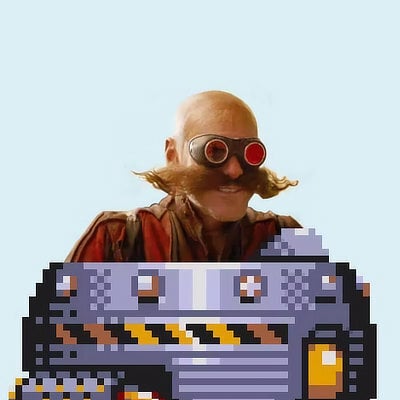Built-in OneDrive and RDP support. No apps needed. I like the sound of that.
- 2 Posts
- 66 Comments

 51·4 months ago
51·4 months agoI’d of thought
would of been
Interesting grammar.
Where are you from?
Uh, most apps are still for Windows. That’s why so many people use it.
If you tell someone to use an alternative OS, but then they are left on their own to run alternative versions of apps that don’t work the same, forced to give up features they are use to, or run dozens of different programs through Wine or Proton or emulation or virtualization or whatever, JUST BECAUSE “Microsoft bad”, they’re going to laugh at you and go right back to Windows.
It’s taken Linux 30(?) years to make it to 4%, and a lot of that is recent because of games. It’s still a niche platform.

 491·5 months ago
491·5 months ago“Canonical announced it was building an all-snap, immutable version of Ubuntu for home users called Ubuntu Core Desktop.”
I don’t like the sound of this.

 30·7 months ago
30·7 months agoI never knew that pirating kids was such a problem.

 161·9 months ago
161·9 months agoAfter realizing the Godot package in Ubuntu was terribly outdated, I checked their snap store.
There are half a dozen Godot packages on Snapcraft, uploaded by random people. There is no indication of which a user should actually get, as none are “official”. The one package that has a “verified” check also has a full description of just the word “blah”, so it’s clear it’s not the real one and the “verified” checkmark means nothing.
Anyone that wants to upload something can. Non-functional, non-tested apps, others’ work, abandoned apps, malware, etc.
And then the system ties your hands behind your back and refuses to let you control things like updates.
Snaps are an abortion and it has been turning people off to Ubuntu like crazy.

 132·9 months ago
132·9 months agoAfter any Ubuntu install:
apt purge snapd

 5·9 months ago
5·9 months agoI’m still waiting for the spooky stuff I’ve been hearing about for years.
I’m being tracked. My information sold and exchanged. Big, evil corporations trading my data with other companies like it was baseball cards. All my inner-most desires leaked!
All to get an ad for a “litter box robot” or whatever when I’m browsing memes.
Well, it’s for work stuff, so I don’t have a lot of choice.
Several years ago some higher-ups chose Microsoft to provide all services. Exchange, Outlook, Teams, OneDrive, etc.
I can use LibreOffice or whatever for documents, but everything else is Microsoft.
I set it up with my work profile for Office 365 stuff.
I’ve given up the hope that Office will ever come to Linux, so instead I’m just trying to use the web version more.

 11·10 months ago
11·10 months agoI found something I couldn’t easily do on Linux…
I wanted to create a Shortcut to a GUI application directly on my Desktop on Linux (Ubuntu 22.04), and after fucking with Gnome extensions and googling multiple terms, I thought I was going insane. There is seriously no easy, standard, or simple way of doing that.
On Windows or macOS you can just click & drag to make a shortcut to a file, and then put the shortcut on your Desktop. Done.
On Gnome you have to manually create a .desktop file, fill it with the parameters to run the application (usually by opening a different .desktop file and copying & pasting the contents), ensure you also have Gnome configured to even allow desktop icons, and then copy the .desktop file to the Desktop.
The Gnome experience was the most-rigid, least user-friendly or user-customizable interface.
I guess the problem is that I shouldn’t be using Gnome. I liked how simple & clean it is by default, but I hate how inflexible it is.
What am I missing?
Linux has been out in the open and running shit since the 1990s.
How exactly is that a secret?

 6025·10 months ago
6025·10 months agoPart of the problem is the instance’s open registrations which do not require you to enter an e-mail address during signup.
How is this even a thing? Why would the Lemmy software even allow operation like this?

 3·10 months ago
3·10 months agoI thought about that after making my post.
Just like there are shitloads of bad SD cards (no-name, unbranded, generic, etc.), it’s just as cheap and easy for any random company to produce their own SSD and get it in circulation on the market just like legitimate SSDs.
Any SSD that could be damaged by a swap file is not an SSD you should have anywhere near your system in the first place (even if you never plan on putting a swap file on it).

 142·10 months ago
142·10 months agoMy thought on this:
If it was bad, wouldn’t we know by now?
SSD-only systems have been a thing for over a decade, and SSDs themselves have been around for decades.
If standard swap files damage SSDs, someone probably would have said something.

 61·11 months ago
61·11 months agoMr. Stallman would be angry if you didn’t define it as the Linux kernel plus the GNU stuff that you need to do things with the kernel.
Kernel + environment = OS

 1·11 months ago
1·11 months agoWe know. I’ve just grown accustomed how Ubuntu is set up. Its defaults for many packages seem a little more configured “out of the box” compared to the same offerings like from Debian. I seem to recall installing LAMP stuff from both Debian and CentOS having a similar base config (basically just using the defaults from php, apache, mysql, etc), while the Ubuntu versions had some things already pre-configured that made it easier to get a multi-domain site up and running quicker.
A fresh Ubuntu install, followed by a snapd purge and rolling back of its networking is usually easier for me than going with something like CentOS or Debian and manually configuring each and ever package with it.
Then again, I’ve been using Ansible for a while, so my setups for CentOS and Debian have been getting easier and easier, so it’s possible that I may eventually drop Ubuntu if they end up changing their OS so much that I can no longer purge their junk.

 19·11 months ago
19·11 months agoOh! I forgot another one! Updates.
You can’t really control when the updates of snaps are rolled out.
For “regular” software, I have an “apt update” type of script that I can run when I choose to update everything on my system. On some systems, I have this in a weekly crontab. On other systems, there is no scheduled run. On those systems, it’s important to keep many apps as-is - so several packages are also locked, as well (“apt-mark hold”).
With snap, you basically have no control. It updates as many times as it wants, when it wants. You can try to adjust some timers to change the window when forced updates are rolled out, but can never tell it to NOT update something. Broken package updated? Well, you can manually roll back that one. Broken update pushed again during the next forced update window? Just roll it back again! (and repeat, every day)
These are the words direct from a snap developer on why you cannot lock an app: “You need to keep your software up to date.”
Yes, I understand that, but I also know it’s really important to not update some stuff, and I know that broken snaps sometimes get pushed.
Basically, the snap developers have talked down to the users. THEY know better of what WE actually want and need, not us dumb users that actually administer things for a living.

 42·11 months ago
42·11 months agoPerformance and functionality.
When I click the Firefox icon, I expect Firefox to open. Like, right away.
When Ubuntu switched it to a snap, there was a noticeable load time. I’d click the icon and wait. In the background the OS was mounting a snap as a virtual volume or something, and loading the sandboxed app from that. It turned my modern computer with SSD into an old computer with a HDD. Firefox gets frequent updates, so the snap would be updated frequently, requiring a remount/reload every update.
Ubuntu tried this with many stock apps (like Calculator), but eventually rolled things back since so many people complained about the obvious performance issues.
I’m talking about literally waiting 10X the time for something to load as a snap than it did compared to a “regular” app.
The more apps you have as snaps, the more things have to be mounted/attached and slowly loaded. This also use to clutter up the output when listing mounted devices.
The Micropolis (GPL SimCity) snap loads with read-only permissions. i.e., you cannot save. There are no permission controls for write access (its snap permissions are only for audio). Basically, the snap was configured wrong and you can never save your game.
I had purged snapd from my system and added repos to get “normal” versions of software, but eventually some other package change would happen and snapd would get included with routine updates.
I understand the benefits of something like Snaps and Flatpaks - but you cannot deny that there are negatives. I thought Linux was about choice. I’ve been administering a bunch of Ubuntu systems at work for well over a decade, and I don’t like what the platform has been becoming.
Also, instead of going with an established solution (flatpak), Ubuntu decided to create a whole new problem (snap) and basically contributes to a splitting of the community. Which do you support? Which gets more developer focus to fix and improve things?
You don’t have to take my word for any of this. A quick Google search will yield many similar complaints.


Ni.ce